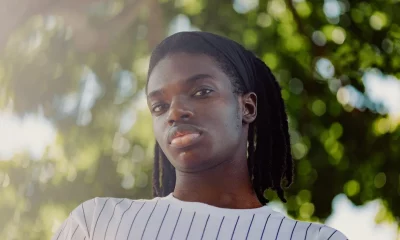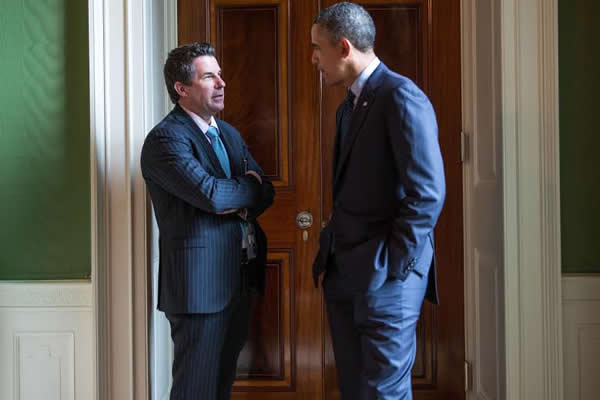Books
‘Secret City’ reveals long hidden stories of gay purges in federal gov’t
Gay journalist uncovers reports of closeted officials serving under 10 presidents
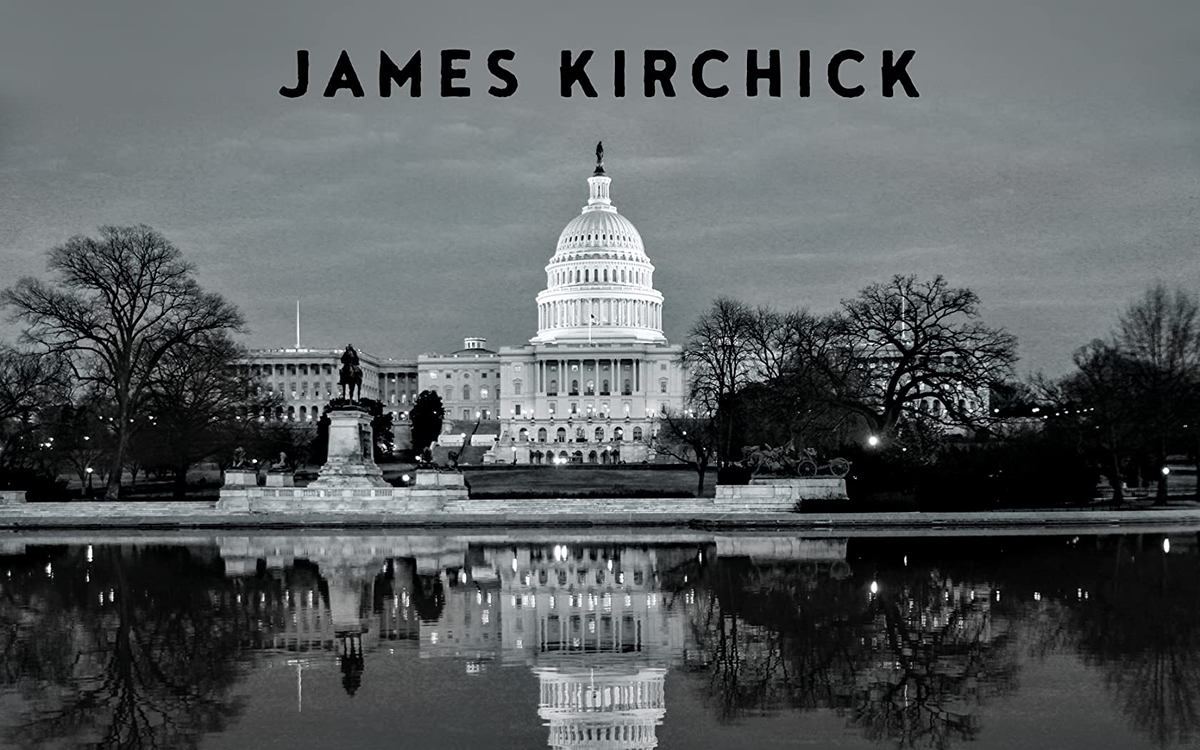
A new book released this week called “Secret City: The Hidden History of Gay Washington” is drawing the attention of LGBTQ rights activists and longtime Washington insiders alike for its never-before-told stories about dozens of closeted mostly gay men and at least one lesbian who worked for 10 U.S. presidents beginning with Franklin Roosevelt through George H.W. Bush.
The book ends with the role LGBTQ people played under the 11th president it covers — Bill Clinton — by pointing out that Clinton was the first president to appoint openly gay or lesbian people to high-level administration positions.
The book’s author, gay journalist James Kirchick, says he chose to end the book with his coverage of Clinton because Clinton, for the most part, ended the restrictions against gays and lesbians serving in sensitive civilian government jobs by lifting the longstanding ban on approving government security clearances for gays.
In an interview with the Blade, Kirchick said he began his research for the book over a decade ago in his role as a Washington reporter with a longstanding interest in the Cold War and the U.S. government’s struggle to address the perceived threat of communism promoted by the then Soviet Union at the conclusion of World War II.
He said that prior to that time homosexuality was perceived as a “sin, a very bad sin,” but not a threat to the safety and security of the country. But that changed at the start of World War II when the country developed what Kirchick calls a bureaucracy for managing military and governmental secrets needed to protect the country from outside threats.
“From the Second World War until the end of the Cold War that followed, the specter of homosexuality haunted Washington,” Kirchick writes in the introduction to his book. “Nothing posed a more potent threat to a political career or exerted a more fearsome grip on the nation’s collective psyche, than the love expressed between people of the same sex,” he writes.
Kirchick notes the development widely observed by historians and LGBTQ activists that homosexuals in important government positions were perceived to be a threat to national security because societal bias and official government restrictions forced them to hide their sexual orientation and made them susceptible to blackmail by foreign government agents seeking to uncover U.S. military secrets.
In his 2006 book, “The Lavender Scare,” gay historian David K. Johnson reports how large numbers of gays were denied security clearances and forced out of their jobs because of fears of security breaches that Johnson said were never shown to have happened.
Kirchick, who said he was inspired by Johnson’s book, expands on “Lavender Scare’s” reporting by providing detailed stories of dozens of individual gay people or people incorrectly thought to be homosexual who became ensnared in investigations into their alleged sexual orientation while working for at least 10 U.S. presidents.
The presidents the book covers include Franklin Roosevelt, Harry Truman, Dwight Eisenhower, John F. Kennedy, Lyndon Johnson, Richard Nixon, Gerald Ford, Jimmy Carter, Ronald Reagan, George H.W. Bush, and Bill Clinton.
A statement announcing the release of the book says Kirchick obtained thousands of pages of declassified documents, interviewed more than 100 people, and viewed documents from presidential libraries and archives across the country to obtain the information he needed for “Secret City.”
Among those forced out of their job was Sumner Wells, a high-level State Department official and diplomatic adviser under Franklin Roosevelt. In “Secret City,” Kirchick tells how despite Wells’ reputation as an invaluable adviser to Roosevelt, the president made it clear Wells could not remain in the administration after word got out that he had solicited one or more young men for sex who worked as porters on passenger trains that Wells had taken to travel to different parts of the country.
Not all of the book’s stories involve government officials. In one story Kirchick tells about Oliver Sipple, a former U.S. Marine who saved the life of President Gerald Ford by deflecting the gun of a woman who attempted to shoot Ford as he emerged from an event in San Francisco. The widely publicized incident prompted some gay activists to publicly disclose that Sipple was gay and should be hailed as a hero.
The book reports that Sipple was not out publicly and became emotionally distraught after being outed. His parents reacted in a hostile way after learning from press reports that their son was a homosexual and told him he was no longer welcome to visit his parents, according to the book.
A far more positive story emerged during the administration of President Jimmy Carter. The book reports on a development reported by the Washington Blade and other media outlets at the time it became known in 1979 when Jamie Shoemaker, a gay man who worked as a linguist with the U.S. National Security Agency, or NSA, had his security clearance revoked and was told he would be fired after officials at the highly secretive agency discovered he was gay.
Shoemaker contested the effort to dismiss him and retained D.C. gay rights pioneer Frank Kameny, who was a recognized expert in helping gays contest efforts to revoke government security clearances, to represent him. In a development that surprised many political observers, former Admiral Bobby Ray Inman, who Carter had appointed as director of the NSA, determined that Shoemaker was not a threat to the agency’s secrets and could retain his security clearance and his job.
Inman made that determination after Kameny and Shoemaker made it clear that Shoemaker was an out gay man who had no problem disclosing his sexual orientation at work if doing so did not jeopardize his job. Shoemaker became the first known gay person to be allowed to retain a high-level security clearance at a U.S. government intelligence agency such as the NSA and possibly at any government agency or department.
Shoemaker, who has since retired, told the Blade that in recent years, an LGBTQ employee group at the NSA has invited him to return to the agency’s headquarters as a guest speaker for the group’s LGBTQ Pride event with the full approval of NSA officials. The welcoming of Shoemaker at the NSA in recent years is viewed by activists as a development illustrating the dramatic changes that have taken place in support of LGBTQ workers at security agencies like the NSA, the CIA, and the FBI.
But Kirchick includes in his book a slightly less positive story about one of Carter’s White House aides, Midge Costanza, who Kirchick says was known by political insiders to be a lesbian who never publicly acknowledged her sexual orientation. Costanza became widely known and praised by LGBTQ activists when she invited LGBTQ leaders from across the country to the White Houses to provide her and the Carter administration with a briefing on LGBTQ issues. The meeting became the first known time that gay and lesbian rights advocates had been invited to the White House for an official meeting.
Carter himself was out of town at the time of the meeting for a pre scheduled visit to the presidential retreat at Camp David, White House officials said at the time.
Kirchick reports that in the following year or two, during Carter’s first and only term in office as president, higher up White House officials who Kirchick says were known as the “Georgia Mafia” because of their association with Carter at the time he was Georgia governor, disparaged Costanza over claims that she was pushing positions too far to the left. Among other things, the White House officials moved Costanza’s office from a prestigious location near the Oval Office to an out of the way basement space. Costanza a short time later resigned and returned to Rochester, New York, where she began her political career.
Despite what Kirchick said was a setback of sorts for the LGBTQ cause by the outcome of Costanza’s tenure at the White House, he writes in his book that the situation soon improved for gay people working in the federal government in Washington.
“The story of the secret city is also the story of a nation overcoming one of its deepest fears,” Kirchick writes in the concluding chapter of “Secret City.”
“Only when gay people started living their lives openly did the hysteria start to become plain for what its was,” he writes. “Across the broad sweep of American history, no minority group has witnessed a more rapid transformation in its status, in the eyes of their fellow citizens, than gay people in the second half of the twentieth century,” Kirchick concludes.
The Blade may receive commissions from qualifying purchases made via this post.

Santa will be very relieved.
You’ve taken most of the burden off him by making a list and checking it twice on his behalf. The gift-buying in your house is almost done – except for those few people who are just so darn hard to buy for. So what do you give to the person who has (almost) everything? You give them a good book, like maybe one of these.
Memoir and biography
The person who loves digging into a multi-level memoir will be happy unwrapping “Blessings and Disasters: A Story of Alabama” by Alexis Okeowo (Henry Holt). It’s a memoir about growing up Black in what was once practically ground zero for the Confederacy. It’s about inequality, it busts stereotypes, and yet it still oozes love of place. You can’t go wrong if you wrap it up with “Queen Mother: Black Nationalism, Reparations, and the Untold Story of Audley Moore” by Ashley D. Farmer (Pantheon). It’s a chunky book with a memoir with meaning and plenty of thought.
For the giftee on your list who loves to laugh, wrap up “In My Remaining Years” by Jean Grae (Flatiron Books). It’s part memoir, part comedy, a look back at the late-last-century, part how-did-you-get-to-middle-age-already? and all fun. Wrap it up with “Here We Go: Lessons for Living Fearlessly from Two Traveling Nanas” by Eleanor Hamby and Dr. Sandra Hazellip with Elisa Petrini (Viking). It’s about the adventures of two 80-something best friends who seize life by the horns – something your giftee should do, too.
If there’ll be someone at your holiday table who’s finally coming home this year, wrap up “How I Found Myself in the Midwest” by Steve Grove (Simon & Schuster). It’s the story of a Silicon Valley worker who gives up his job and moves with his family to Minnesota, which was once home to him. That was around the time the pandemic hit, George Floyd was murdered, and life in general had been thrown into chaos. How does someone reconcile what was with what is now? Pair it with “Homestand: Small Town Baseball and the Fight for the Soul of America” by Will Bardenwerper (Doubleday). It’s set in New York and but isn’t that small-town feel universal, no matter where it comes from?
Won’t the adventurer on your list be happy when they unwrap “I Live Underwater” by Max Gene Nohl (University of Wisconsin Press)? They will, when they realize that this book is by a former deep-sea diver, treasure hunter, and all-around daredevil who changed the way we look for things under water. Nohl died more than 60 years ago, but his never-before-published memoir is fresh and relevant and will be a fun read for the right person.
If celeb bios are your giftee’s thing, then look for “The Luckiest” by Kelly Cervantes (BenBella Books). It’s the Midwest-to-New-York-City story of an actress and her life, her marriage, and what she did when tragedy hit. Filled with grace, it’s a winner.
Your music lover won’t want to open any other gifts if you give “Only God Can Judge Me: The Many Lives of Tupac Shakur” by Jeff Pearlman (Mariner Books). It’s the story of the life, death, and everything in-between about this iconic performer, including the mythology that he left behind. Has it been three decades since Tupac died? It has, but your music lover never forgets. Wrap it up with “Point Blank (Quick Studies)” by Bob Dylan, text by Eddie Gorodetsky, Lucy Sante, and Jackie Hamilton (Simon & Schuster), a book of Dylan’s drawings and artwork. This is a very nice coffee-table size book that will be absolutely perfect for fans of the great singer and for folks who love art.
For the giftee who’s concerned with their fellow man, “The Lost and the Found: A True Story of Homelessness, Found Family and Second Chances” by Kevin Fagan (One Signal / Atria) may be the book to give. It’s a story of two “unhoused” people in San Francisco, one of the country’s wealthiest cities, and their struggles. There’s hope in this book, but also trouble and your giftee will love it.
For the person on your list who suffered loss this year, give “Pine Melody” by Stacey Meadows (Independently Published), a memoir of loss, grief, and healing while remembering the person gone.
LGBTQ fiction
For the mystery lover who wants something different, try “Crime Ink: Iconic,” edited by John Copenhaver and Salem West (Bywater Books), a collection of short stories inspired by “queer legends” and allies you know. Psychological thrillers, creepy crime, cozies, they’re here.
Novel lovers will want to curl up this winter with “Middle Spoon” by Alejandro Varela (Viking), a book about a man who appears to have it all, until his heart is broken and the fix for it is one he doesn’t quite understand and neither does anyone he loves.
LGBTQ studies – nonfiction
For the young man who’s struggling with issues of gender, “Before They Were Men” by Jacob Tobia (Harmony Books) might be a good gift this year. These essays on manhood in today’s world works to widen our conversations on the role politics and feminism play in understanding masculinity and how it’s time we open our minds.
If there’s someone on your gift list who had a tough growing-up (didn’t we all?), then wrap up “I’m Prancing as Fast as I Can” by Jon Kinnally (Permuted Press / Simon & Schuster). Kinnally was once an awkward kid but he grew up to be a writer for TV shows you’ll recognize. You can’t go wrong gifting a story like that. Better idea: wrap it up with “So Gay for You: Friendship, Found Family, & The Show That Started It All” by Leisha Hailey & Kate Moennig (St. Martin’s Press), a book about a little TV show that launched a BFF-ship.
Who doesn’t have a giftee who loves music? You sure do, so wrap up “The Secret Public: How Music Moved Queer Culture from the Margins to the Mainstream” by Jon Savage (Liveright). Nobody has to tell your giftee that queer folk left their mark on music, but they’ll love reading the stories in this book and knowing what they didn’t know.
The Blade may receive commissions from qualifying purchases made via this post.
Books
‘90s club kids will love Mark Ronson’s new book
‘Night People’ part esoteric hip-hop discography, part biography
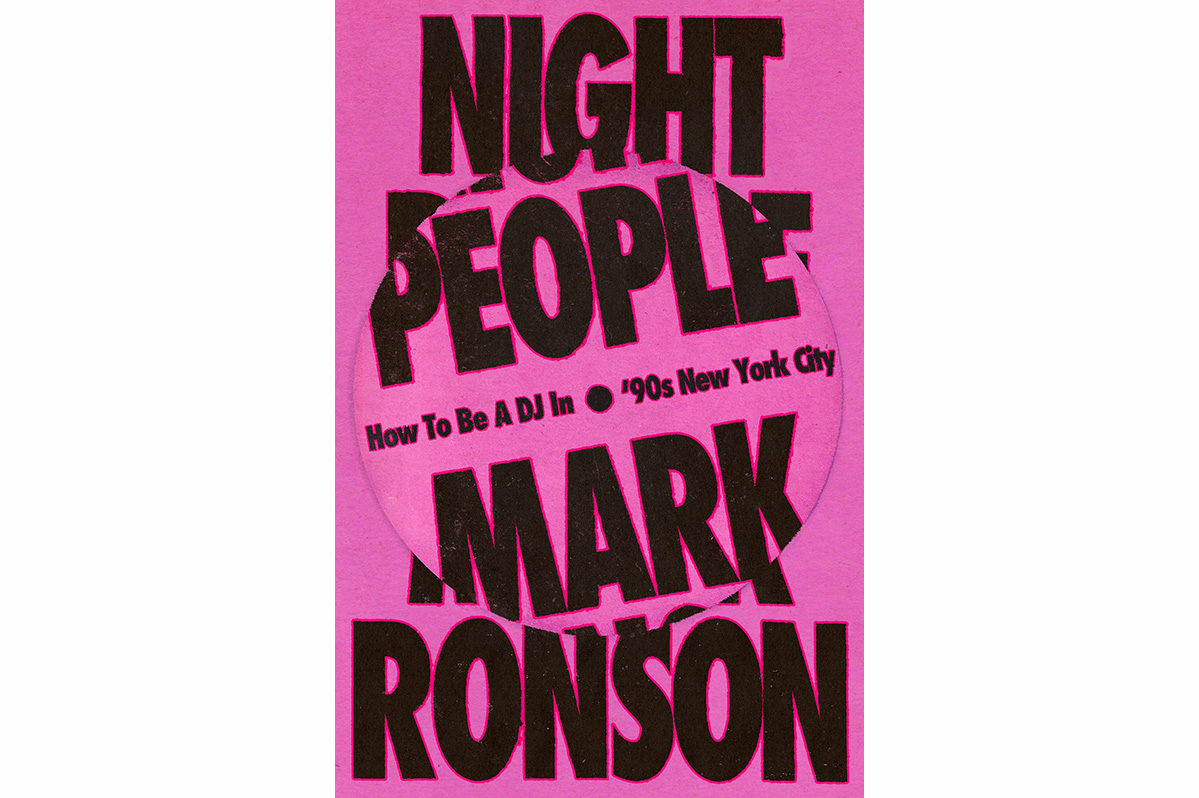
‘Night People’
By Mark Ronson
c.2025, Grand Central
$29/256 pages
You just can’t hold still.
The music starts and your hips shake, your shoulders bounce, your fingers tickle the sky to match a beat. Your air guitar is on-point, your head bops and your toes tap. You can’t help it. As in the new memoir, “Night People” by Mark Ronson, you just gotta dance.

With a mother who swanned around with rock bands, a father who founded a music publishing company, and a stepfather who founded the band, Foreigner, it was natural that Mark Ronson would fall into a music career of some sort. He says he was only 10 years old when he realized the awesome power of music.
As a pre-teen, he liked to mix music in his stepfather’s studio. As a teenager, he formed a band with Sean Lennon that didn’t quite catch on. In the fall of his senior year of high school, Ronson began sneaking into Manhattan clubs to listen to music, dance, and find drugs. It was there that he noticed the alchemy that the DJs created and he searched for someone who’d teach him how to do that, too. He became obsessed.
Finding a gig in a New York club, though, was not easy.
Ronson worked a few semi-regular nights around New York City, and at various private parties to hone his skills. His mother purchased for him the electronic equipment he needed, turntables, and amps. He befriended guys who taught him where to get music demos and what to look for at distributor offices, and he glad-handed other DJs, club owners, and music artists.
That, and the rush he got when the dance floor was packed, made the job glamorous. But sometimes, attendance was low, DJ booths were located in undesirable places, and that totally killed the vibe.
Some people, he says, are mostly day people. For others, though, sunlight is something to be endured. Nighttime is when they when they feel most alive.
Part esoteric hip-hop discography, part biography, part SNL’s Stefan, and part cultural history, “Night People” likely has a narrow audience. If you weren’t deep into clubbing back in the day, you can just stop here. If you were ages 15 to 30, 30 years ago, and you never missed club night then, keep reading. This is your book.
Author Mark Ronson talks the talk, which can be good for anyone who knows the highs of a jam-packed club and the thrill of being recognized for skills with a turntable. That can be fun, but it may also be too detailed: mixology is an extremely heavy subject here. Many of the tunes he names were hits only in the clubs and only briefly, and many of the people he name-drops are long gone. Readers may find themselves not particularly caring. Heavy sigh.
This isn’t a bad book, but it’s absolutely not for everyone. If you weren’t into clubbing, pass and you won’t miss a thing. If you were a die-hard club kid back then, though, “Night People” will make your eyes dance.
Want more? Then check out “What Doesn’t Kill Me Makes Me Weirder and Harder to Relate To” by Mary Lucia (University of Minnesota Press). It’s Lucia’s tale of being a rock DJ in Minneapolis-St. Paul, life with legions of listeners, and not being listened to by authorities for over three harrowing, terrifying years while she was stalked by a deranged fan.
The Blade may receive commissions from qualifying purchases made via this post.
Books
Pioneering gay journalist takes on Trump 2.0 in new book
Nick Benton’s essays appeared in Fall Church News-Press
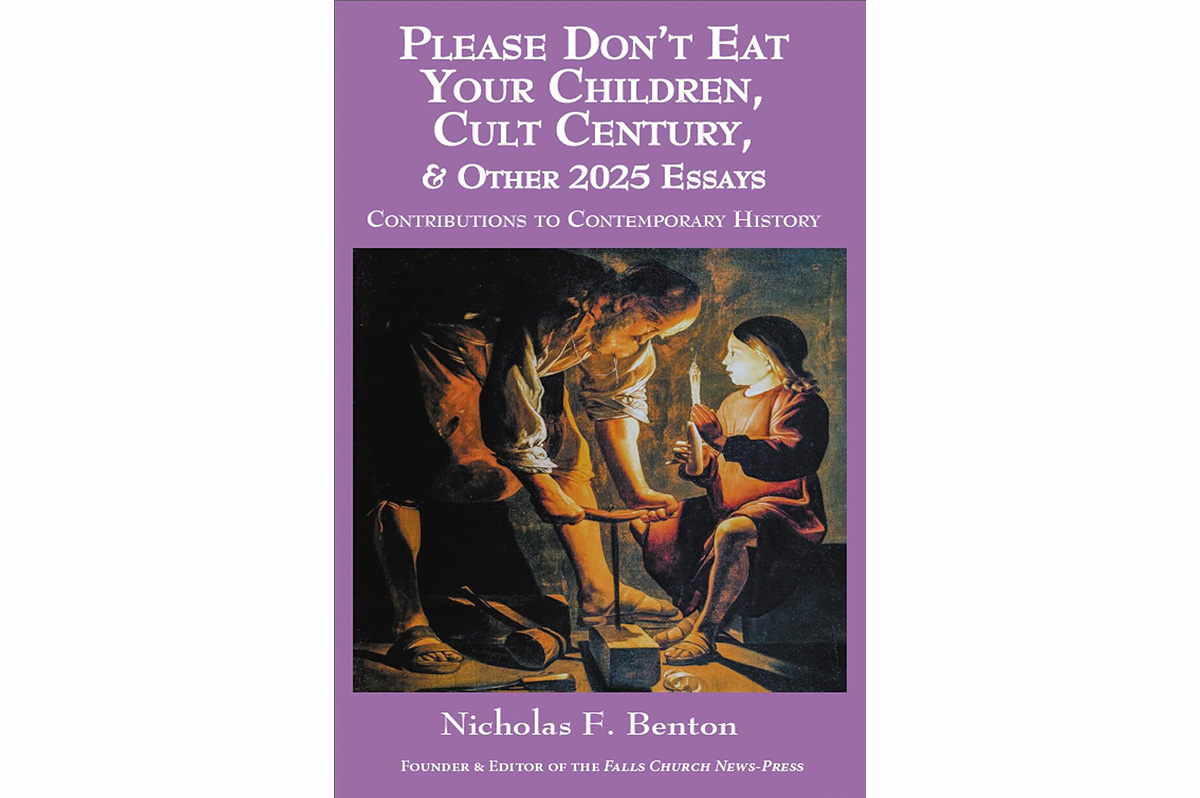
Nicholas Benton is a well-known local LGBTQ advocate and journalist and the longtime owner and editor of the Falls Church News-Press, a weekly newspaper.
In his eighth book out now, Benton offers a new set of remarkable essays all crafted in the first eight months of Trump 2.0 and its wholesale effort at dismantling democracy and the rule of law. Most were published in the Falls Church News-Press, but he adds a new piece to this volume, as an addendum to his “Cult Century” series, revealing for the first time his experiences from decades ago in the political cult of Lyndon LaRouche, aimed at providing a clearer grasp of today’s Cult of Trump.
His “Please Don’t Eat Your Children” set takes off from the satire of Jonathan Swift to explore society’s critical role of drumming creativity out of the young.

Below is an excerpt from “Please Don’t Eat Your Children, Cult Century, and other 2025 Essays.”
Please Don’t Eat Your Children
In his famous short essay, “A Modest Proposal: For Preventing the Children of Poor People in Ireland From Being a Burden to Their Parents or Country and for Making Them Beneficial to the Public,” author and Anglican priest Jonathan Swift (1667-1745) uses cutting satire to suggest that cannibalism of the young might help solve a battery of social ills.
As we examine our broken society today, it seems to me that reflecting on Swift’s social critique can be quite useful. Now we face a nation filled with anger and division and there is little to suggest any real solutions other than insisting people “don’t do that!” We can start out with the observation that young children, left to their own, are neither hateful nor cruel. How do they get that way later on in their lives? What drives them toward such emotional states and behaviors? It is not a problem only for the margins of society, for the extreme misfits or troubled. It is defining the very center of our culture today. Our divisions are not the cause, but the result of something, and nobody is saying what that is.
Swift doesn’t say what it is in his biting little essay. But it is implied by a context of a lack of bounty, or poverty, on the one hand, and an approach to it characterized by obscenely cruel indifference, on the other. He coined the phrase “useless eaters” in defining his radical solution. In Hitler’s Germany, that term resonated through the death camps and some in our present situation are daring to evoke it again as the current administration pushes radical cuts in Medicaid funding.
But while that refers to the old and infirm, mostly, it is the young we are talking about here. The problem is that our society is structured to devour our young and as they begin to find that out, they rebel. Not in all cases is this the practice, of course. Where there is little or no lack, things are different. We nurture our young, as we should, and we love them. Lucky is the child who is born to parents who are of means, and in a community where nurture is possible and valued. But even such children are ultimately not immune from facing a destiny of pale conformity battered by tightly delimited social expectations and debt slavery. If they have enough ambition, education and doors opened for them, some can run the gauntlet with relative effectiveness. Otherwise, our young are raised to die on battlefields, or to struggle in myriad other painful social conflicts aimed at advancing the world of their elders. In the Bible, there is a great admonition against this process that comes at the very precondition for the tradition it represents that begins with Abraham.
It is in the book of Genesis at the beginning of the Biblical story when, as that story goes, God commanded Abraham to kill his son, Isaac, as a sacrifice. As Abraham is about to obey, God steps in and says no. The entire subsequent eons-long struggle to realize Abraham’s commission by God to make a great nation that would be a light to the world would have been cut short right then if Abraham had slain his own son. The message is that all of the Abrahamic traditions, Judaism, Islam and Christianity, owe their source, and in fact are rooted, in God’s command to reject the sacrifice of children to the whims of their elders. The last thousands of years can be best defined in these terms, where nurture is pitted against exploitation of our young with, at best, vastly mixed results. Scenes like that at the opening of “All Quiet on the Western Front,” the World War I novel and film where a teacher rallies a classroom full of boys to enlist in the war, is bone chilling. Or, the lyric in Pink Floyd’s iconic song, Comfortably Numb, “When I was a child, I caught a fleeting glimpse out of the corner of my eye. I turned to look but it was gone. I cannot put my finger on it now. The child is grown, the dream is gone.”
Nick Benton’s new book is available now at Amazon.
The Blade may receive commissions from qualifying purchases made via this post.
-

 Congress3 days ago
Congress3 days agoEXCLUSIVE: George Santos speaks out on prison, Trump pardon, and more
-

 Opinions4 days ago
Opinions4 days agoThe beginning of the fall of Trump
-

 Congress5 days ago
Congress5 days agoMarkey reintroduces International Human Rights Act in Senate
-

 Egypt4 days ago
Egypt4 days agoIran, Egypt object to playing in Seattle World Cup ‘Pride Match’



